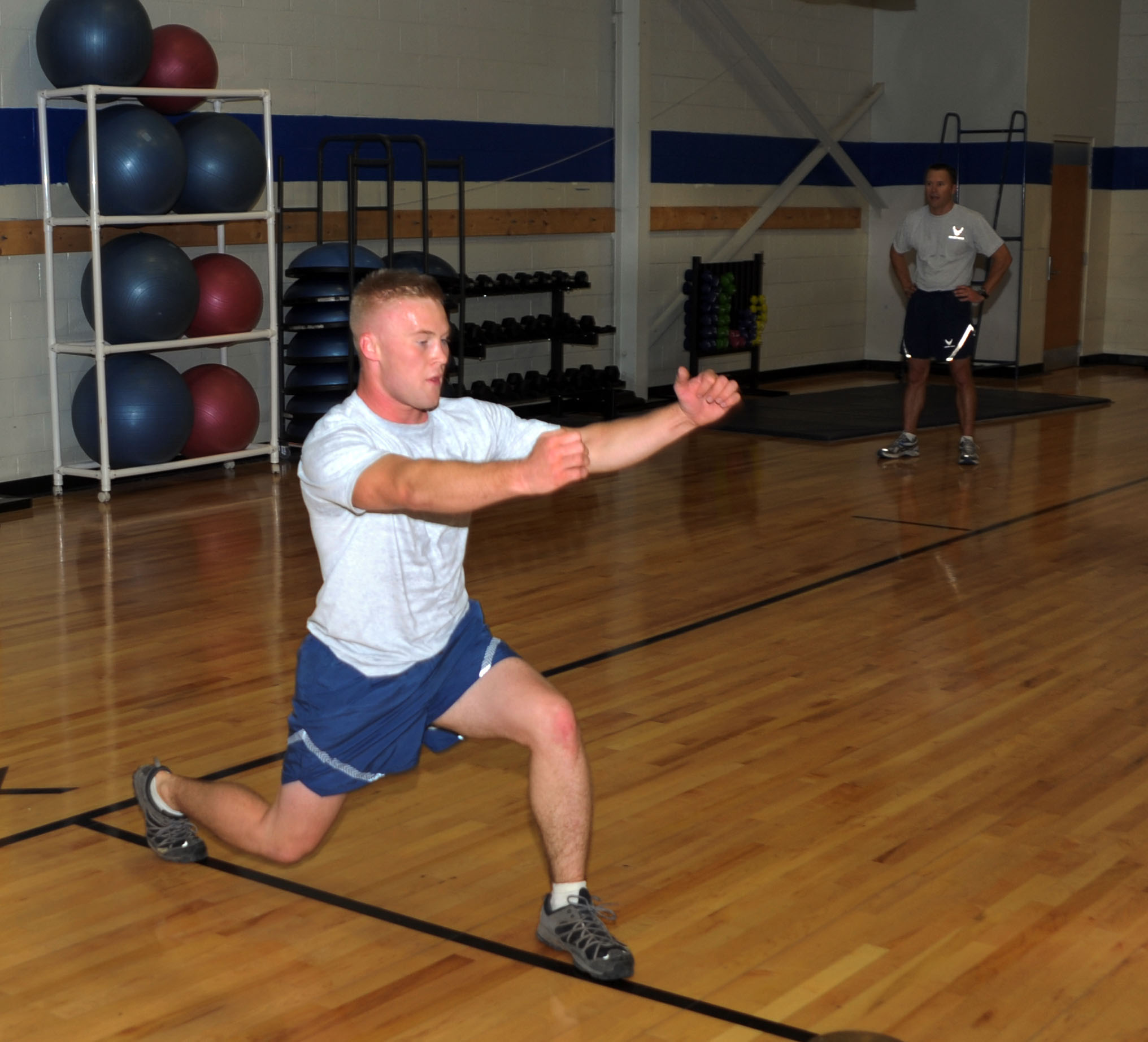- You are here:
- Home »
- Blog »
- Training »
- What muscles do lunges work?
What muscles do lunges work?
 Photo by: Wikimedia
Photo by: Wikimedia
Lunges have long been one of the most well-known fitness exercises, but they can also have serious strength benefits if you do them heavy enough. Most people recognize it as a lower body exercise, but aren’t sure exactly what muscles they target. So exactly what muscles do lunges work?
- Muscles directly worked – quadriceps, hamstrings, glutes
- Muscles indirectly worked – calves, abdominals, lower back, obliques
You can see that lunges mainly target the lower body, but there are some major benefits your core in the form of stability. If you want to work your quadriceps, hamstrings, or glutes – and who doesn’t – these may be a good exercise for you. They aren’t the most efficient exercise for building your legs, though, and you may want to consider some other exercises or at least mix in some alternatives listed below.
Lunges can be challenging for many people because the muscles in the quadriceps and hamstrings are your biggest, but lunges also hit your core. Your abs, obliques, and lower back are all responsible for stabilizing your body during a lunge. You might not notice this on lighter sets, but they are being activated and worked indirectly. The heavier you go, or the more reps you do, the more important your core muscles are for stabilizing both your legs and your upper body.
You can see a demonstration of a traditional alternating dumbbell lunge in the video below. You can see the importance of stepping at the proper distance in front of you and not going too far. Stepping too for can cause too much stress on you knee and other areas of your rear leg. The thigh of your leading leg should be parallel to the ground when in the deepest position.
Traditional lunges are hardly the only lunge exercise that can be performed, as there are many variations. If you want to stick in the lunge family, the reverse lunge and side lunge are great options that work many of the same muscles and sometimes more.
The side lunge is great as it targets many of the same muscles, but with extra emphasis on the inner thighs. If you have only trained in the traditional way before, this would be great to mix in. The video below demonstrates a side lunge, which many people actually find to be tricky. Basically rather than stepping forward, you step to the left and right, one leg at a time.
The reverse lunge is another great option, and many trainers prefer it, because it puts less stress on the knee. As you might expect, rather than stepping forward to initiate the movement, you step backwards. The goal is to reach your knee behind your hip to make sure you are hitting the proper position.
There are also other non-lunge exercises that target the same muscles. Obviously, the big exercises like back squats, front squats, and deadlifts give you the most value when working your lower body, and these exercises and their variations should be the focus of your leg training. It is a great idea to perform one of these exercises first on your leg day, and then mix in a lunge or an alternative as supplemental work for your lower body.
There are also several alternatives to lunges if you perform them as a supplementary exercise or as a conditioning type of movement. For starters, you could simply use something other than a dumbbell such as a barbell or with an overhead weight. Lunge jumps are also a great exercise if you want to get some lyometric training in. These are usually good advanced options for most people. Step ups, goblet squats, and hill sprints are great for conditioning the lower body and work the same muscles that lunges do, just in different ways.
Many people who lift for fitness or for general health reasons will often perform the lunge as part of their daily routine. However, if you do the same exercise repeatedly, without changing up the amount of weight lifted or the number of reps done, you will quickly adapt to that training and your progress will stall. This is why trying out alternative exercises is so important – they provide your body with a new stimulus.

